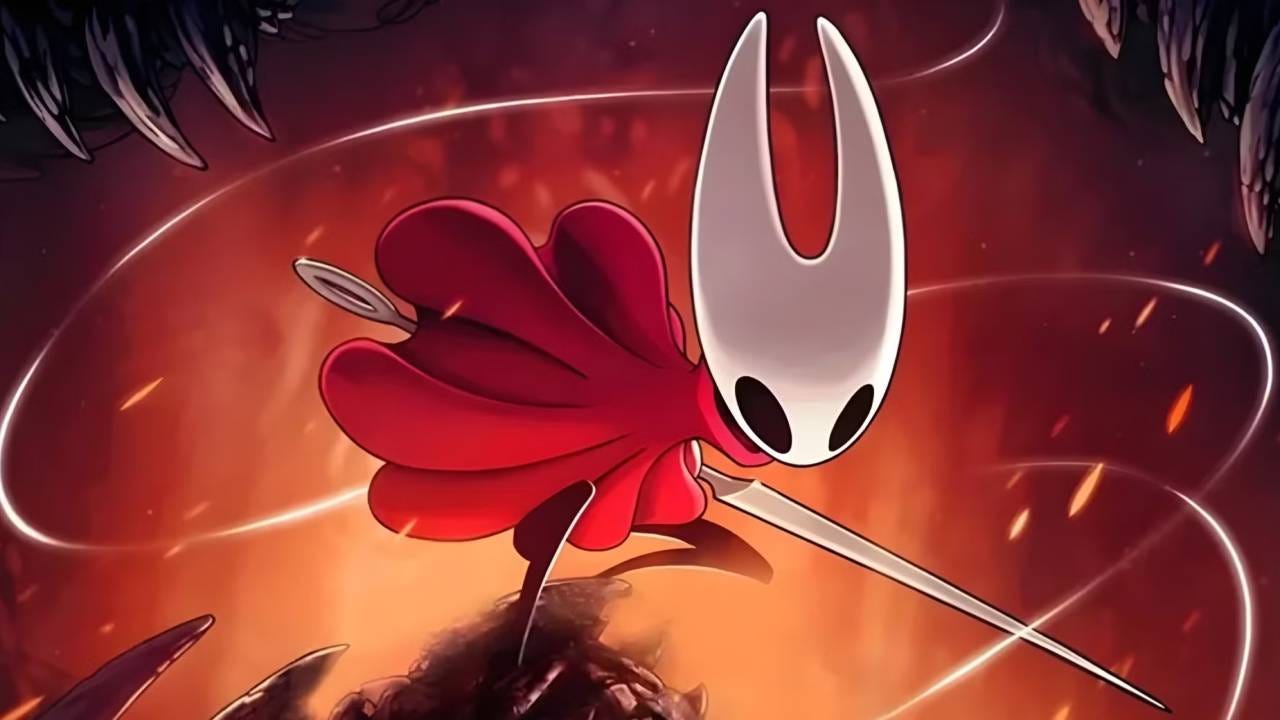With Hollow Knight: Silksong finally set to release on September 4, 2025, the original Hollow Knight is experiencing a remarkable resurgence. Steam player counts have climbed to new all-time highs in recent weeks, crossing over 23,000 concurrent users—an impressive milestone for a game that first launched in 2017. The timing is almost poetic. A full playthrough of Hollow Knight usually takes between 25 and 50 hours depending on how thorough you are, which makes late August the perfect window to dive in before its long-awaited sequel arrives.
For players who have somehow missed it until now, Hollow Knight is widely considered one of the finest modern Metroidvanias. Set in the decayed insect kingdom of Hallownest, it offers a sprawling interconnected map, challenging boss fights, and lore that reveals itself in fragments to those willing to search for it. What continues to make the game compelling, even eight years later, is the combination of its hand-drawn art style, responsive combat, and a progression system that rewards both curiosity and persistence. The game has sold more than 15 million copies to date, and renewed excitement for Silksong has brought forums, guides, and community discussion roaring back to life.
The game remains easy to access in 2025. On PC, Hollow Knight is typically priced around AED 42 on Steam in the UAE, though frequent sales make it even cheaper. On PlayStation, the Voidheart Edition—which includes all of the game’s free expansions—sells for about $14.99, with regional AED pricing varying depending on store settings. Physical copies for Switch and PlayStation 4 occasionally surface at local retailers like Virgin Megastore or Geekay, though digital storefronts are the most reliable option. On modern consoles such as the PlayStation 5 and Xbox Series X|S, it runs smoothly through backwards compatibility.
A first playthrough usually takes about 25 hours if you focus on the main story, 35 to 40 hours if you engage with side content, and closer to 60 if you aim to complete everything, including the toughest endgame challenges. Importantly, the version available today already includes all post-launch expansions—Hidden Dreams, The Grimm Troupe, Lifeblood, and Godmaster. Each of these updates added new bosses, balance improvements, and endgame content, rounding out what is now considered the definitive edition of the game.

For new players, the early hours of Hollow Knight can feel daunting. The world is intentionally opaque, and death carries a penalty that can be punishing without careful play. The best approach is to prioritize exploration and mobility upgrades early, since new movement abilities open the map far faster than raw combat upgrades. Money management, or Geo, becomes critical, as unlocking fast travel points prevents devastating losses after defeat. Magic, too, is a surprisingly powerful tool in the early and mid-game, especially when combined with charms that enhance spell strength. Mapping tools such as the Quill and Compass are essential purchases, since Hallownest can quickly become overwhelming without them. Combat is best approached with patience—bosses are designed to reward pattern recognition, and many early defeats come more from over-aggression than lack of strength.
The game’s charm system allows for a wide range of playstyles, but certain combinations stand out for beginners. Charms like Shaman Stone amplify spell damage, making magic a viable offense against early bosses. Longnail and Mark of Pride increase melee reach, giving players more breathing room in close encounters. Quick Focus makes healing more forgiving in tight battles, while Fragile Strength—later upgradeable to Unbreakable Strength—offers a significant attack boost for those willing to risk it. As the world opens, exploration often provides the tools needed to overcome previously impossible challenges, and detours usually reward persistence with upgrades or resources that make progression easier.
All of this leads into Silksong, which shifts the focus to Hornet, a faster and more acrobatic protagonist with a new combat style, resource system, and expanded mobility. The sequel introduces multiple towns, craftable tools, and a quest structure that builds on the original while expanding its scale. Yet so much of its story and world design is rooted in Hollow Knight’s foundations. For anyone hoping to fully understand the references, characters, and themes of the sequel, playing the first game remains essential.
What makes this moment special is that Hollow Knight does not feel like a dated warm-up act. Even now, it stands as one of the most carefully crafted indie games of the past decade. The fact that it is drawing record numbers of players years after release speaks to its enduring design, as well as the strength of the anticipation surrounding its follow-up. Starting Hollow Knight today is not only a perfect way to prepare for Silksong, but also a chance to experience one of the defining games of modern indie development on the eve of its successor.






